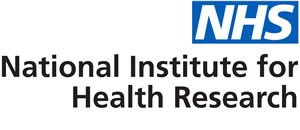REAL TIME CARDIOVASCULAR SOFTWARE TO ASSIST ANAESTHETISTS IN MANAGING COMPLEX SURGICAL CASES
PROJECT SUMMARY
The NIHR Trauma Management MedTech Co-operative (NIHR Trauma MIC) collaborated with Directed Systems Ltd, a UK-based software and data analytics company, for nearly 5 years on the development of a new solution to aid clinical decision making by anaesthetists during complex surgery.
CLINICAL NEED
Keeping blood pressure stable during an operation is strongly associated with poor post-operative outcomes. During surgery, the anaesthetist can adjust anaesthesia and give the patient cardiovascular medication and fluids to help keep blood pressure stable. Currently, the anaesthetist has to rely on only their skills and experience to decide what treatment to give and when. Giving extra information to the anaesthetist to help them control blood pressure would help patients be healthier after their operation and shorten their stay in hospital. This would have clear benefits for the patient and the NHS.
THE SOLUTION
Directed Systems Ltd. have developed innovative software called Hypotension Decision Assist (HDA) to assist anaesthetists with the management of blood pressure and the cardiovascular system during surgery. Anaesthetists currently use devices called vital signs monitors to measure blood pressure, heart rate etc. The HDA software comes pre-installed on a medical grade computer, automatically collecting this vital signs data and processes it through proprietary algorithms developed and patented by the company. This provides easy to understand, at a glance real-time trends in mean arterial blood pressure (MAP), cardiac output (CO), heart rate (HR) and systemic vascular resistance (SVR). This buys the clinician time to avoid hypotension. HDA helps to assist the anaesthetist in deciding the best course of treatment. At the end of the operation there is a case review providing a visual summary report of the key control metrics for the surgery period.
HOW WE SUPPORTED
NIHR Trauma MIC provided regulatory and commercialisation advice, assisted in finding funding for product development, undertook human factors validation (formative and summative usability) studies, and oversaw a first-in-human clinical evaluation to obtain evidence to support regulatory approval.
NIHR Trauma MIC supported by:
• Identifying and partnering on grant funding applications to secure a 21 month Innovate UK grant.
• Liaising with the Trauma PPIE group at UHB at regular intervals during the grant application and throughout the Innovate UK funded project to obtain a patient perspective of the work.
• Planning, setting up and moderating formative and summative usability studies to assess the ease of use, training requirements and instructions for use of prototype versions of HDA in a realistic, simulated environment.
• Recruiting twelve anaesthetists over the two studies, filming the testing sessions using a static, high-definition camera and conducting post-study questionnaires and interviews.
• Compiling comprehensive reports and edited video for both usability studies to summarise the outcomes and participants feedback.
• Devising a protocol and associated paperwork to undertake a first-in-human clinical evaluation of the HDA in 30 real time operations.
• Obtaining the required approvals from REC, HRA, MHRA and UHB Research Governance to open and run the clinical investigation.
• Working with Directed Systems Ltd and Innovate UK to reschedule the project during the disruption caused by the COVID-19 pandemic.
OUTCOMES
Feedback from the formative usability session was positive and identified some minor amendments required for the system, which were made by Directed Systems. The summative study demonstrated that the system had the potential to provide additional, helpful information to the anaesthetist and did not distract them from patient management and that the system was ready for use in a clinical investigation.
The first in man clinical study was successful providing evidence that HDA accurately tracked patient vital signs information and provides helpful information to an anaesthetist in real time. A secondary endpoint showed that a novel blood pressure prediction feature was very accurate over the desired range.
A future study is being planned to evaluate the clinical impact of HDA on patient care.
The system has been cleared for sale by the FDA in the USA and will be seeking regulatory approvals for sale in the UK/NHS and EU markets.
TESTIMONIAL
“Directed Systems have been delighted to work with and be supported by NIHR Trauma MIC throughout the project from an idea all the way through to a successful clinical investigation. Bringing a new healthtech product to market is a huge undertaking and requires great expertise by all parties. Tom and his team brought a high degree of professionalism and know-how that made our collaboration hugely rewarding and successful They are an amazing team to work with” Mark Leaning PhD, CEO & Founder

